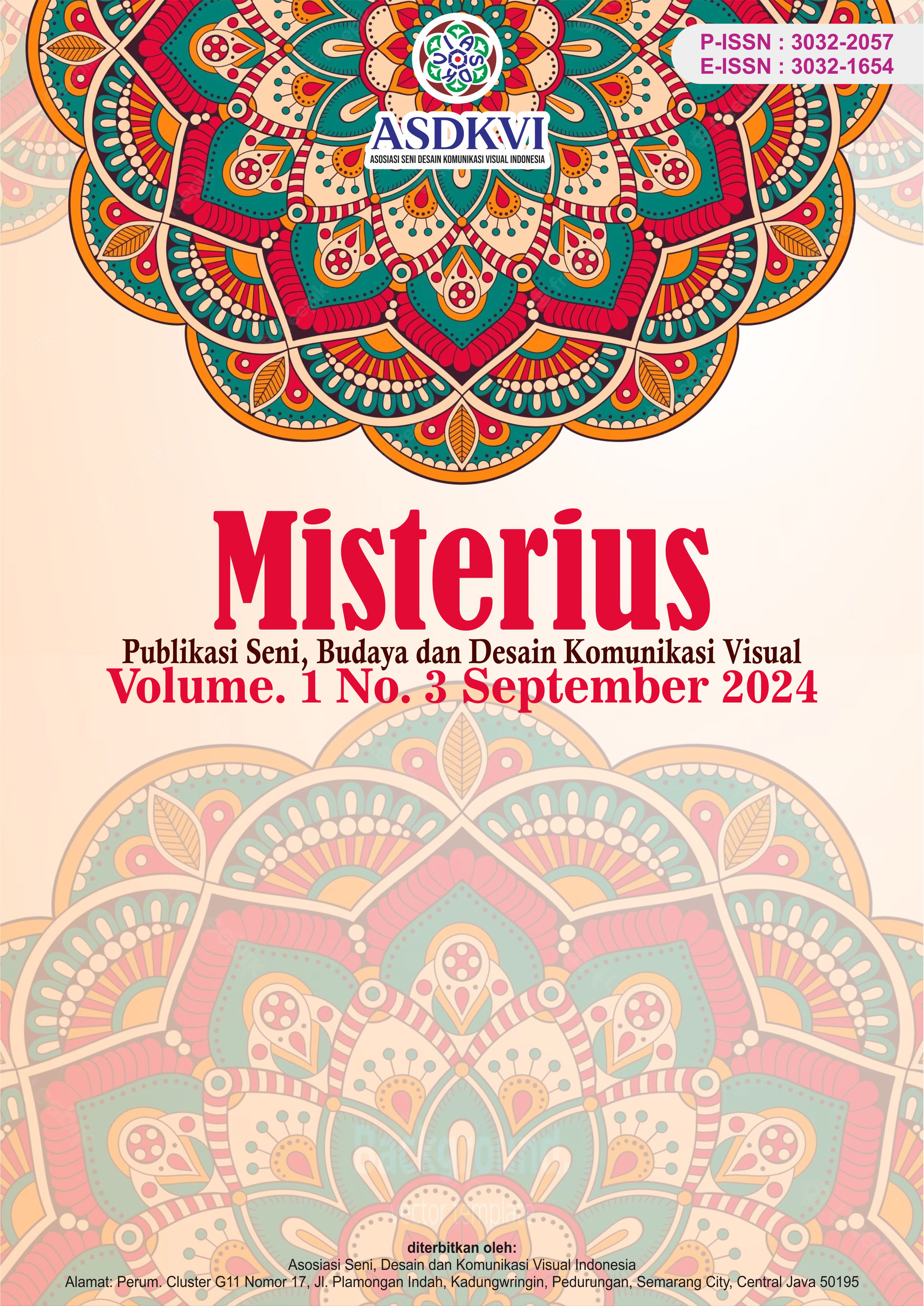Fungsi Tari Pasambahan dalam Upacara Adat Manjalang Rumah Gadang Mandeh Rubiah di Lunang
DOI:
https://doi.org/10.62383/misterius.v1i3.298Keywords:
Function, Pasambahan Dance, Traditional Ceremony, Manjalang Rumah Gadang Mandeh RubiahAbstract
This study aims to find out and describe the form of presentation of Dikia Rabano by the "Tukang Dikiu" group in the Jopuik Antau Marapulai event in Lubuak Alai, Kapur IX District, Lima Puluh Kota Regency. This type of research is qualitative research with a descriptive method. The research instrument is the researcher himself and is assisted by supporting instruments such as stationery and cameras. Data were collected through literature studies, observations, interviews and documentation. The steps of analyzing data are data collection, data reduction, data presentation and drawing conclusions. The results of the study show that the existence of Dikia Rabano art in Nagari Lubuak Alai is still appreciated and continues to this day. Dikia Rabano's art is able to influence society and become a symbol of a community such as the niniak mamak procession on Islamic holidays and bridal processions. The form of Dikia Rabano's presentation in Nagari Lubuak Alai is played by standing while walking along the procession of niniak mamak and bridal rows. The song sung in Dikia Rabano is a verse with Islamic nuances, in ancient times this song was believed to be a song of a mother in putting her child to sleep.
References
Armi, R. F., & Mansyur, H. (2033). Bentuk penyajian tari hari langsung sebagai tari kreasi masyarakat Kota Pekanbaru. E-Jurnal Sendratasik, 11(2), 219-226.
Fatih, A. (2014). Adat dan budaya masyarakat Banjar. Bogor: Penerbit Wadah Ilmu.
Indarayuda. (2012). Eksistensi tari Minangkabau. Padang: UNP Press.
Indrayuda. (2017). Concept of art education: Developing aesthetic sensibility, social and situational awareness. In Proceedings of the Sixth International Conference on Languages and Art (ICLA2017). Atlantis.
Marsiano, E., Nerosti, N., & Astuti, F. (2019). Faktor-faktor penghambat pembelajaran seni budaya (seni tari) di SMP Negeri 4 Padang. Jurnal Sendratasik, 8(4), 11-19.
Moleong, L. J. (2013). Metodologi penelitian kuantitatif. Bandung: PT Remaja Rosdakarya.
Nerosti, N. (2022). Studi tari teks dan konteks. Padang: Sukabina Press.
Pratiwi, E. Y. R., Asmarani, R., Widiyati, E., Nuruddin, M., & Susilo, C. Z. (2020). Pelatihan tari kreasi sebagai peningkatan kompetensi guru MI/PAUD/RA Raden Fatah. Abidumasy Jurnal Pengabdian Kepada Masyarakat, 1(2), 41-49.
Sugiyono. (2011). Metode penelitian kuantitatif, kualitatif dan R&D. Bandung: Alfabeta.
Tohirin. (2011). Metode penelitian kualitatif dalam pendidikan dan bimbingan konseling. Jakarta: PT Raja Gravindo Persada.
Yosaadi. (2011). Rumah Gadang dan maknanya. Retrieved from http://yosaadi.blogspot.com/2011/03/rumahgadang-dan-maknanya.html
Downloads
Published
How to Cite
Issue
Section
License
Copyright (c) 2024 Misterius : Publikasi Ilmu Seni dan Desain Komunikasi Visual.

This work is licensed under a Creative Commons Attribution-ShareAlike 4.0 International License.





